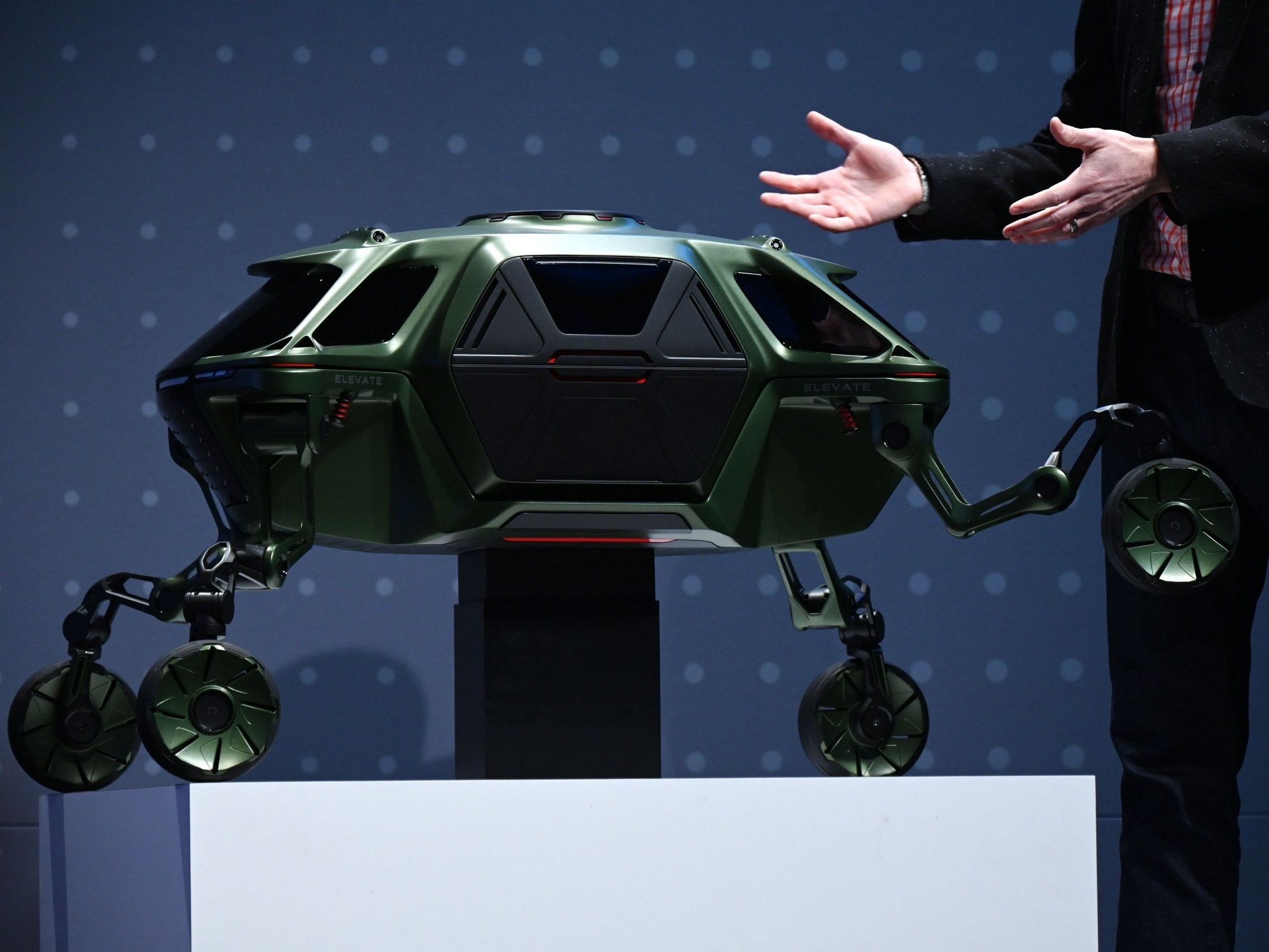Hyundai unveils robotic vehicle to transform rescue efforts in disaster zones
Elevate vehicle uses technology from electric cars and robots to travel over difficult terrain

Your support helps us to tell the story
From reproductive rights to climate change to Big Tech, The Independent is on the ground when the story is developing. Whether it's investigating the financials of Elon Musk's pro-Trump PAC or producing our latest documentary, 'The A Word', which shines a light on the American women fighting for reproductive rights, we know how important it is to parse out the facts from the messaging.
At such a critical moment in US history, we need reporters on the ground. Your donation allows us to keep sending journalists to speak to both sides of the story.
The Independent is trusted by Americans across the entire political spectrum. And unlike many other quality news outlets, we choose not to lock Americans out of our reporting and analysis with paywalls. We believe quality journalism should be available to everyone, paid for by those who can afford it.
Your support makes all the difference.A car which can climb walls and step over holes thanks to its robotic legs could transform the way rescue teams operate in disaster zones.
More than 10,000 people died in natural catastrophes in 2017, with an estimated 201 million needing international humanitarian assistance.
One of the problems is reaching those affected. Car maker Hyundai has unveiled a concept vehicle named Elevate which blends the technology found in electric cars with that found in robots to help it cover terrain beyond the limitations of even the most capable off-road vehicle.
Elevate can be driven by first responders to a location like a traditional electric car.
But when the terrain gets tough, it can use its “highly dexterous” robotic legs to move in any direction.
It can climb a 5ft wall, step over a 5ft gap, walk at 3mph over tricky terrain, and achieve a 15ft wide wheelbase, all while keeping its body and passengers completely level.
The legs, which can “walk” like a mammal or reptile, also fold up into a stowed drive-mode, where power to the joints is cut, and the use of an integrated passive suspension system maximises battery efficiency.
It is not just disaster zones where people can benefit from Elevate, according to Hyundai.
Disabled people who do not have access to a ramp outside their home could hail an Elevate taxi that could walk up to their front door, level itself, and allow their wheelchair to roll in.
Elevate is part of Hyundai’s “Centre for Robotic-Augmented Design in Living Experiences” (Cradle), which aims to enhance transportation on and off the road.
It has been dubbed the world’s first “Ultimate Mobility Vehicle” and is being revealed in concept form at this week’s Consumer Electronic Show in Las Vegas, USA.
In a statement, the manufacturer said: “At CES 2019, Hyundai Cradle is presenting a totally new vehicle concept that combines the power of robotics and EV technology to take people where no vehicle has been before.
“The quadrupedal Hyundai Elevate will redefine the boundaries and perceptions of vehicular mobility.
“Its four highly dexterous and movable legs can be utilised in ways beyond the imagination to allow Hyundai’s inception of a new vehicle category – The Ultimate Mobility Vehicle (UMV).”
The manufacturer is also unveiling an electric concept car which can autonomously drive to an empty parking space to be charged up.
SWNS
Join our commenting forum
Join thought-provoking conversations, follow other Independent readers and see their replies
Comments